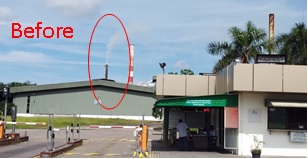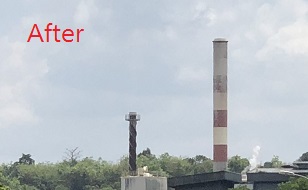ESP Rehabilitation & SMPS Upgrade at Pulp & Paper Plant in Malaysia
Application
Industry: Pulp & Paper
ESP OEM: SF-Cleanair Oy
Process: Sludge Incinerator
Country: Pahang, Malaysia
Problem
The ESP is single-chambered with 2 mechanical fields equipped with 2 conventional Transformer Rectifier (T/R) units. It has been in operation since 1999, and its performance had degraded over the years due to aging internal parts e.g. slack Discharge Electrode (DE) and bent Collecting Electrode (CE). DE rapping system failure also played a part in aggravating the problem. The running mA values had always been lower than 5% of its rating at 400mA. The ESP’s poor condition had brought on people’s attention as smoke was visible coming out of the stack. The plant had to solve the problem due to public’s growing awareness of air pollution and its hazardous effects to human health.
Solution
ESP assessment had been recommended by doing thorough inspection and results suggested replacement of CE and DE for both fields and upgrading the 2 conventional T/R units into Switch Mode Power Supply (SMPS). Taking into account the limited shutdown period of the plant, some works had to be done beforehand. For example, the assembly of DE onto the DE frame and CE onto the suspension beam had to be completed before shutdown and placed on a specially built hanging fixture in order to minimize the installation time. In addition, top DE rapping system had been modified to side rapping for easier maintenance. The installation was completed within 9 days.
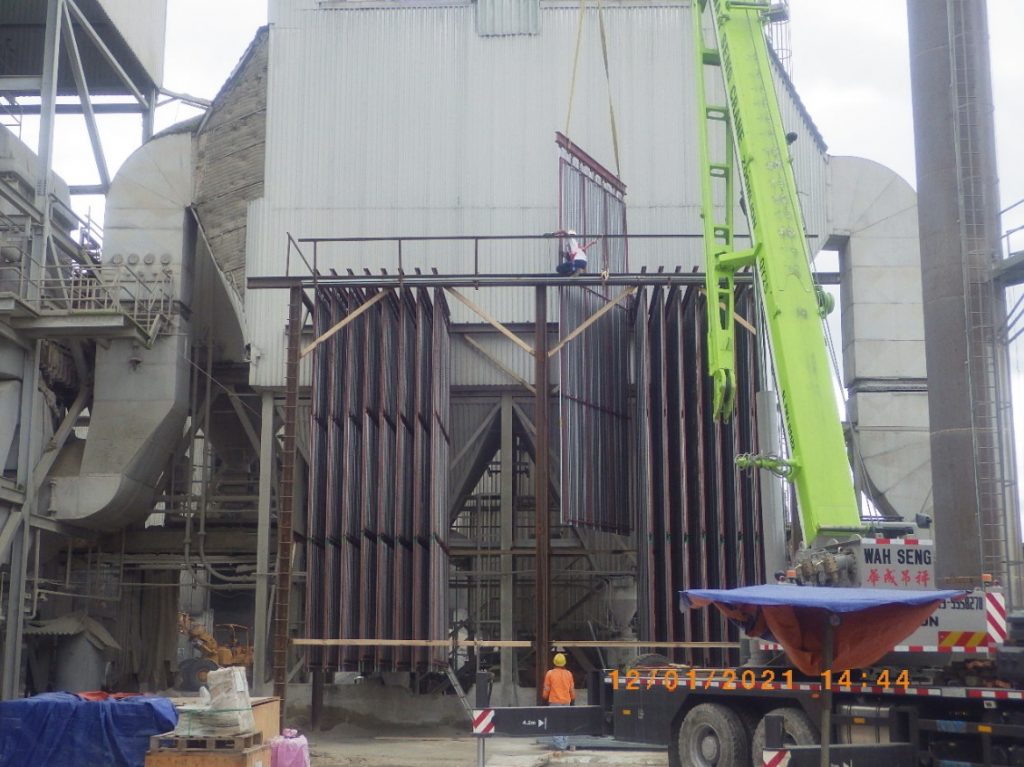
CE/DE hanging fixture
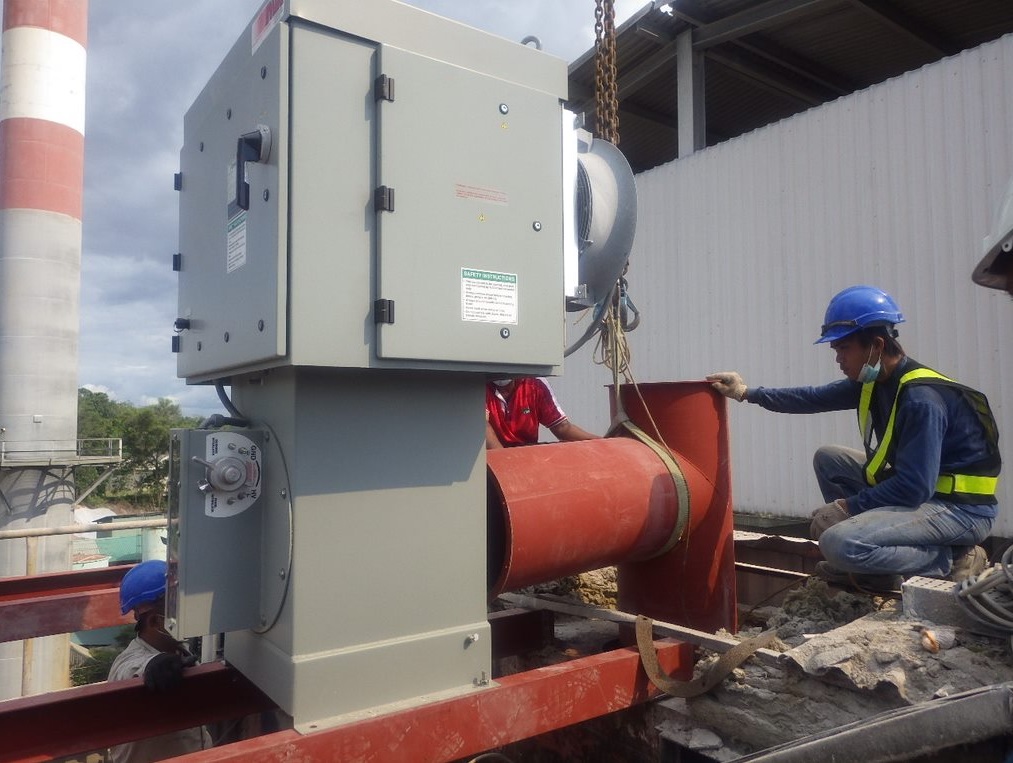
Installing new SMPS
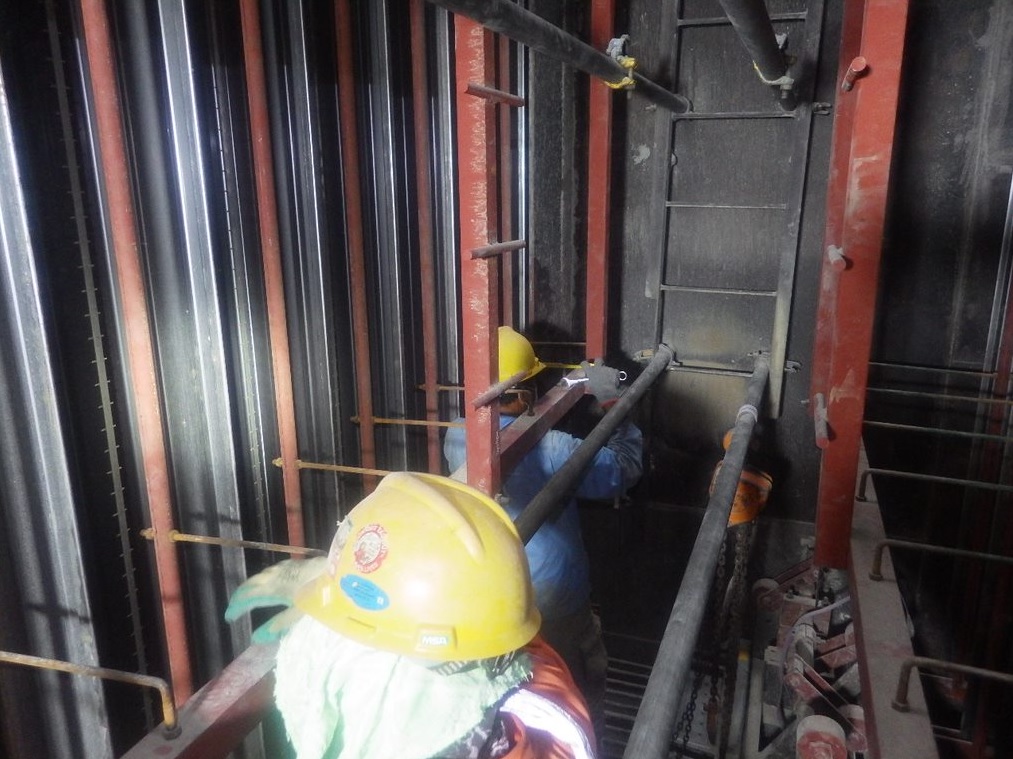
Installing new CE & DE
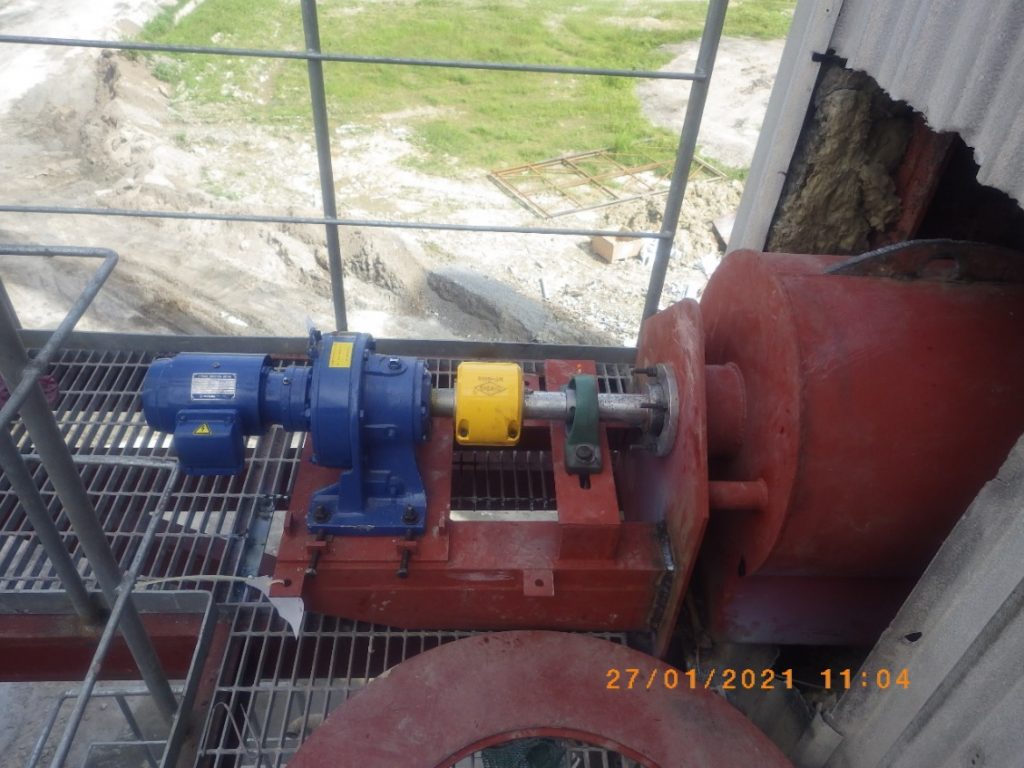
Newly installed side DE rapping system with platform
Benefit
Due to COVID-19 pandemic outbreak and regulations of Movement Control Order in Malaysia, the baseline test couldn’t be conducted right before shutdown. The most recent stack emission data available before shutdown was 76mg/Nm3 measured in April 2019. After the upgrade, performance tests were conducted twice with the same fuel feeding rate as before the upgrade. During the first test conducted right after startup, the total particulate emission was measured at 30.8mg/Nm3. Three months after startup, the plant conducted another test on their own with result of 21.8mg/Nm3. Both results showed that the emission reduction rate is more than 50%.
| Test Date | Apr. 2019 | After startup | 3 months after startup |
| Dust Emission at Stack | 76mg/Nm3 | 30.8mg/Nm3 | 21.8mg/Nm3 |
The running data was also recorded as below table. Apparently, running values increased greatly after the upgrade. This phenomenon implies that much more power is being fed into the ESP, which enhances its dust collection efficiency and reduces emission. As a result, the stack emission has greatly improved in terms of statistics and visibility.
| Running Data | Before upgrade | After startup | 3 months after startup |
| Field 1 (kV) | 33 | 37 | 45 |
| Field 1 (mA) | 18 | 383 | 341 |
| Field 2 (kV) | 21 | 33 | 43 |
| Field 2 (mA) | 14 | 382 | 385 |
